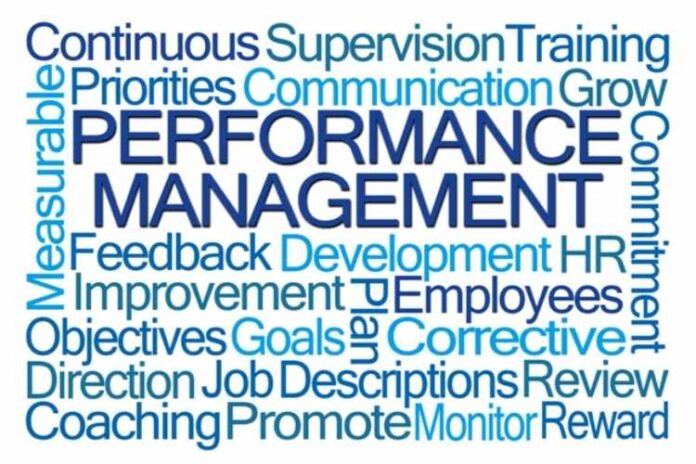A performance management system is the mainstay of every successful business. These systems are not the same as the traditional performance appraisal system. Performance management covers a broader area.
Improving performance management expands employee effectiveness. It can also help your company reach its mission. Here’s how to improve your current process and start seeing results.
What are the Components of a Performance Management Process?
A performance management process has clear job descriptions for every position. These job descriptions can help with recruitment efforts. They can also guide employees who are seeking advancement throughout the organization.
Performance management should also describe a comprehensive recruitment process. This includes strategies for advertising jobs and what job application materials should be. Companies should also have guidance on conducting interviews to identify qualified candidates.
Performance management should include plans for existing employee training and development. Training helps employees learn new skills they’ll need within their immediate roles. Development focuses on an employee’s growth to meet future expectations.
Performance management also includes guidance on holding performance discussions with staff. Sometimes performance management software supports these discussions. Find out more here on how supervisors can use this software to discuss future goals or provide feedback for employees.
Performance management also means identifying clear advancement or promotional opportunities for employees. These opportunities can meet an employee’s desire to grow in their career. They’ll also show how the organization can help them get there.
Performance management systems also include the design for employee exit interviews. Exit interviews should capture employee experiences while working with the organization. This design should also collect data to understand why an employee is leaving.
Steps for Improving Performance Management
Here are just a few tips on how you can improve your company’s performance management. These tips include:
Set Reachable Goals
Goals don’t only apply to reducing call resolution times or reaching target numbers. Each employee should know how their work supports the company’s goals and what role they play in the company’s bigger picture.
Employees should feel like they have a hand in creating their goals. Goal setting should be a collaborative effort between both employees and managers. That way, both feel like they are invested in the process to meet these goals.
When employees participate in setting goals, they’ll soon understand why these goals were selected for them and how they can meet them.
Align Company Priorities and Employee Goals
One way you can improve performance management is to link employee contributions with your company’s top priorities. There is a tool you can use called OKRs. OKR stands for “objectives and key results.”
OKR is a goal-setting tool used by employees and leadership to set goals together, that have measurable results. OKRs lets you track any progress and encourage collaboration around a measurable goal.
OKRs lets employees see firsthand, how their contributions align with the company’s goals and how their efforts can support reaching these goals. OKRs give managers a way to track goal progress and assess employee performance in real-time or on an ongoing basis.
Review Performance Management Data
When your goals are done and agreed to by both managers and employees, it’s time for you to collect data on their progress.
Start documenting all onboarding or employee coaching meetings. Create call resolution logs and customer feedback channels. Review annual performance evaluations to collect this data. They’ll provide the written records you’ll need for reviewing employee performance.
Coach Your Managers on Performance Management Tasks
Improving performance management doesn’t happen in a vacuum. Your managers will influence the dedication and buy-in of your employees.
They’re your front lines for leading employees to success through even the worst of times. That’s why managers need the skills necessary to oversee your company’s successful performance management tasks.
Invest in the resources and time you’ll need to train your managers to be effective performance management leaders. Managers will also benefit from your performance management tasks for them as well.
One way to start the performance management improvement process with your front-line managers is to have a conversation with them. Ask them these questions:
- What’s their understanding of what a performance management system is?
- What do they want to use it for?
- What do they want to do with it?
- What ideas do they have to create a new or improve the existing system?
When you have this conversation, they’ll soon see the unique dual position they have. They’ll understand how performance affects both the worker and leadership as well.
Evaluate Your Process at Regular Intervals
Performance management is an ever-evolving process. As a team grows and changes, the performance management guidelines will need to do so, too.
Evaluate your process at regular checking points throughout the year. Review how well your performance management process, tools, and outcomes are working. Stay current on industry best practices for performance management.
Review your entire team to see how well they’re meeting their goals. Are your employees continuously exceeding their intended goals? Are they showing signs of not meeting your expectations? Then this could be a sign that your performance management process needs attention and adjustments.
What’s Your Next Step?
The best start to improving performance management is to foster open communications with your whole team.
Explain the system’s process and hopeful outcomes. Be sure that your organization’s managers are included in these conversations as well.
Be prepared for a variety of reactions you may receive from your employees. You may meet resistance if people have to change their old habits.
Remind them that your system is in place so that your organization can help them do their best. Don’t forget to check our blog for other ideas on improving performance management. You’ll find ideas on how you can achieve your business goals. Just put these performance management system improvements into place and watch your business succeed.


